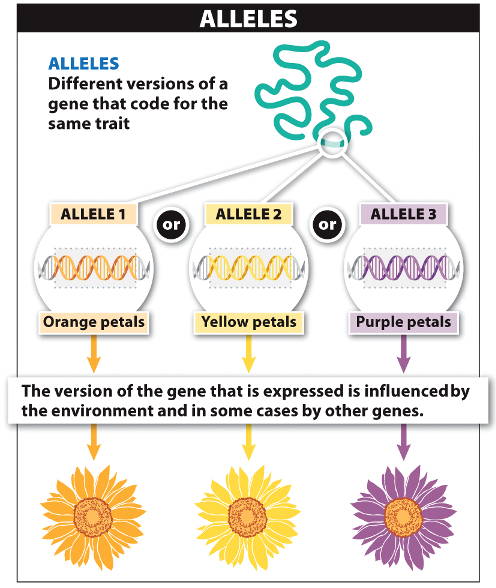 Alternative versions of a gene that code for different variations of a protein
are called alleles.
Alternative versions of a gene that code for different variations of a protein
are called alleles.
Different alleles may result in the production of different variants of a
proteins
and be observed as different traits (phenotypes) of an organism, such as petal color.
For each gene, an individual inherits 2 alleles, each inherited from a parent.
An individual's inherited alleles make up its genotype;
which may be observed as a visible phenotype (e.g., flower color).
 Genes and inheritance
Genes and inheritance 
 Genes and inheritance
Genes and inheritance 